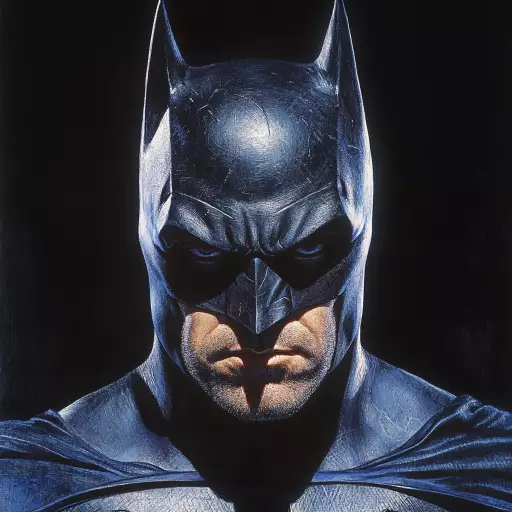Explore the Best AI Image Gallery

AI: The New Brushstroke - How Artificial Intelligence is Transforming Graphic Design
The world of graphic design is undergoing a seismic shift, driven by the rapid advancements in artificial intelligence (AI). This transformative technology is not just automating mundane tasks but also pushing the boundaries of creative expression, offering designers new tools and possibilities. From generating stunning visuals to streamlining workflows, AI is reshaping the very fabric of the graphic design industry.
Automating the Workflow: Efficiency Redefined
One of the most significant impacts of AI in graphic design is its ability to automate repetitive tasks. Tools powered by machine learning can now perform actions such as resizing images, creating social media graphics, and generating variations of existing designs with remarkable speed and accuracy. This frees up designers to focus on more strategic and creative aspects of their work, fostering greater efficiency and productivity.
Beyond Automation: Unleashing Creative Potential
AI is not merely a tool for automation; its also a catalyst for unlocking new creative frontiers. AI-powered design platforms can generate unique visuals based on specific prompts or styles, offering designers a starting point for exploration and experimentation. These platforms can learn from existing design trends and offer fresh perspectives, pushing the boundaries of imagination.
Examples of AI in Graphic Design:
- Logo Generation: AI algorithms can generate multiple logo options based on a companys brand identity, target audience, and desired style.
- Image Editing and Enhancement: AI-powered tools can automatically remove blemishes, adjust lighting, and enhance image quality with impressive precision.
- Typography and Font Design: AI can analyze text data and generate custom fonts that complement the tone and message of a design project.
Ethical Considerations: Navigating the Uncharted Territory
As with any powerful technology, the integration of AI in graphic design raises important ethical considerations. One key concern is the potential for job displacement as AI automates tasks currently performed by human designers. Its crucial to find a balance between leveraging AIs capabilities and ensuring that human creativity remains at the core of the design process.
Another ethical consideration is the issue of bias in AI algorithms. If training data reflects existing societal biases, AI-generated designs may inadvertently perpetuate these stereotypes. Its essential to develop and utilize AI tools responsibly, addressing biases and promoting inclusivity in design.
Future Trends: Where AI Takes Design Next
The future of graphic design with AI is brimming with exciting possibilities. We can expect to see:
- More Personalized Experiences: AI will enable designers to create hyper-personalized designs that cater to individual preferences and needs.
- Real-Time Design Collaboration: AI-powered tools will facilitate seamless collaboration between designers, clients, and stakeholders in real time.
- Interactive and Immersive Designs: AI will play a key role in developing interactive and immersive design experiences for virtual and augmented reality applications.
As AI continues to evolve, its impact on graphic design will only become more profound. By embracing this transformative technology responsibly and ethically, designers can unlock new levels of creativity, efficiency, and innovation, shaping the future of visual communication.



](https://images.ai-img.art/thumbnails/150/157712d76865d557120f9baf988de3d0525225295a2789c89bf2c4a5a96a03d1.webp)



![**Representation: A teenager smiling while thinking about a friendly dog, a comic-style thought bubble with a friendly dog inside. Graphic style: Line drawing, cartoon style, influenced by Franco-Belgian comics, thick black lines, simplified design, vector, black and white only, in the style of Keith Haring or the French comic strip "Alinéa". [IMPORTANT]: A single continuous line extending from one side of the image to the other, minimalist, strong outlines, line drawing, without lifting the hand, ultra-simplified, no shading, entirely white image, drawing created in the center of a sheet of paper. --ar 16:5** - <@627984126871470085> (fast)](https://images.ai-img.art/thumbnails/150/6fc850f638e3dee0c4b121acecad2c8419e02bdeac7f871d625f1003c1c3abe1.webp)






](https://images.ai-img.art/thumbnails/150/9d51c5e673b4f2068b7b01abc35425a06f173b76303adf9ad29ca14302c25b18.webp)

](https://images.ai-img.art/thumbnails/150/51c93500396faff4e7fa8b42bc68033067b16b2230e3496e95c482a581ff0fe9.webp)















![**Representation: A dog acting as a private tutor to a child. The dog holds a ruler in its paw and stands at the blackboard to explain a dog diagram to the child. Graphic style: Line drawing, cartoon style, influenced by Franco-Belgian comics, thick black lines, simplified design, vector, black and white only, in the style of Keith Haring or the French comic strip "Alinéa". [IMPORTANT]: A single continuous line extending from one side of the image to the other, minimalist, strong outlines, line drawing, without lifting the hand, ultra-simplified, no shading, entirely white image, drawing created in the center of a sheet of paper. --ar 16:5** - Variations (Strong) by <@627984126871470085> (fast)](https://images.ai-img.art/thumbnails/150/f4e034998ccd869d8a061fd12017514fcd92210eb33d4222dc9b54716223f4dd.webp)


![**Representation: A dog acting as a private tutor to a child. The dog holds a ruler in its paw and stands at the blackboard to explain a dog diagram to the child. Graphic style: Line drawing, cartoon style, influenced by Franco-Belgian comics, thick black lines, simplified design, vector, black and white only, in the style of Keith Haring or the French comic strip "Alinéa". [IMPORTANT]: A single continuous line extending from one side of the image to the other, minimalist, strong outlines, line drawing, without lifting the hand, ultra-simplified, no shading, entirely white image, drawing created in the center of a sheet of paper. --ar 16:5** - <@627984126871470085> (fast)](https://images.ai-img.art/thumbnails/150/7a854648a81e51241dcca8d24dd6e3bfcf07ad1df51baf401c9b729f4cf411fa.webp)








